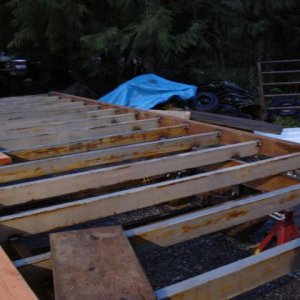I have a question about those rub rails. When we put them on they were not the ones that were meant for the busy wild bridge. We used 6x8 instead of the 4x4' s because that was some material that we had laying around do to a DNR miss order.
Also the rub rails do not and are not what holds the bridge together. Under the rub rails is angle Iron that holds the planks in. If you go over to the bridge on the sunshine trail there is a bridge with no rub rails and you can see the dynamics's of what holds the planks in. The rub rails are designed to guide the driver as to not fall off the bridge. We have plenty of rub rails and they are designed to be changed.
If we are going to ask for a width restriction we will need to consider the width between the trees and the actual width of the bridge.
Rub rails are designed to be rubbed and driven on if needed.
It's my understanding that the bridges on the Sunrise were a slightly different, and better construction than the ones on the busywild. On the busy, (and I haven't bent over the bridge to look at them) the rub rails are also keeping the planks from sliding back and forth and that there were only anchored in sections. At least that's how I recall Nancy explaining it to me.









